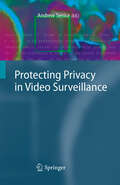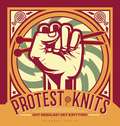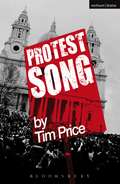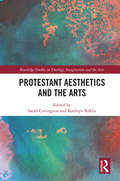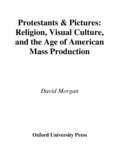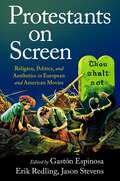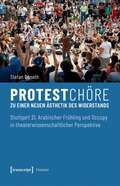- Table View
- List View
Protecting and Exploiting New Technology and Designs
by K. HodkinsonThe protection of intellectual property rights has become a major concern in recent years. The opportunities being seized, or lost, in areas such as computer software or biotechnology have captured most of the headlines but in every research facility, whatever the subject, there is an increased awareness of the importance to R & D management of a more commercial attitude. Keith Hodkinson has run Government sponsored "professional updating" courses for academic and industrial researchers and business executives. The practical questions raised there and the advice found most useful have all helped to make this guide a down-to-earth source of help which will be of immediate, profitable use to its readers. Appendices to the book as well as giving lists of useful names and addresses to contact also contain examples of draft letters, contracts and record forms and licensing negotiating checklists.
Protecting and Exploiting New Technology and Designs
by K. HodkinsonThe protection of intellectual property rights has become a major concern in recent years. The opportunities being seized, or lost, in areas such as computer software or biotechnology have captured most of the headlines but in every research facility, whatever the subject, there is an increased awareness of the importance to R & D management of a more commercial attitude. Keith Hodkinson has run Government sponsored "professional updating" courses for academic and industrial researchers and business executives. The practical questions raised there and the advice found most useful have all helped to make this guide a down-to-earth source of help which will be of immediate, profitable use to its readers. Appendices to the book as well as giving lists of useful names and addresses to contact also contain examples of draft letters, contracts and record forms and licensing negotiating checklists.
Protecting Privacy in Video Surveillance
by Andrew SeniorProtecting Privacy in Video Surveillance offers the state of the art from leading researchers and experts in the field. This broad ranging volume discusses the topic from various technical points of view and also examines surveillance from a societal perspective. A comprehensive introduction carefully guides the reader through the collection of cutting-edge research and current thinking. The technical elements of the field feature topics from MERL blind vision, stealth vision and privacy by de-identifying face images, to using mobile communications to assert privacy from video surveillance, and using wearable computing devices for data collection in surveillance environments. Surveillance and society is approached with discussions of security versus privacy, the rise of surveillance, and focusing on social control. This rich array of the current research in the field will be an invaluable reference for researchers, as well as graduate students.
Protecting the Dharma through Calligraphy in Tang China: A Study of the Ji Wang shengjiao xu 集王聖教序 The Preface to the Buddhist Scriptures Engraved on Stone in Wang Xizhi’s Collated Characters (Monumenta Serica Monograph Series)
by Pietro De LaurentisThis is a study of the earliest and finest collated inscription in the history of Chinese calligraphy, the Ji Wang shengjiao xu 集王聖教序 (Preface to the Sacred Teaching Scriptures Translated by Xuanzang in Wang Xizhi’s Collated Characters), which was erected on January 1, 673. The stele records the two texts written by the Tang emperors Taizong (599–649) and Gaozong (628–683) in honor of the monk Xuanzang (d. 664) and the Buddhist scripture Xin jing (Heart Sutra), collated in the semi-cursive characters of the great master of Chinese calligraphy, Wang Xizhi (303–361). It is thus a Buddhist inscription that combines Buddhist authority, political power, and artistic charm in one single monument. The present book reconstructs the multifaceted context in which the stele was devised, aiming at highlighting the specific role calligraphy played in the propagation and protection of Buddhism in medieval China.
Protecting the Dharma through Calligraphy in Tang China: A Study of the Ji Wang shengjiao xu 集王聖教序 The Preface to the Buddhist Scriptures Engraved on Stone in Wang Xizhi’s Collated Characters (Monumenta Serica Monograph Series)
by Pietro De LaurentisThis is a study of the earliest and finest collated inscription in the history of Chinese calligraphy, the Ji Wang shengjiao xu 集王聖教序 (Preface to the Sacred Teaching Scriptures Translated by Xuanzang in Wang Xizhi’s Collated Characters), which was erected on January 1, 673. The stele records the two texts written by the Tang emperors Taizong (599–649) and Gaozong (628–683) in honor of the monk Xuanzang (d. 664) and the Buddhist scripture Xin jing (Heart Sutra), collated in the semi-cursive characters of the great master of Chinese calligraphy, Wang Xizhi (303–361). It is thus a Buddhist inscription that combines Buddhist authority, political power, and artistic charm in one single monument. The present book reconstructs the multifaceted context in which the stele was devised, aiming at highlighting the specific role calligraphy played in the propagation and protection of Buddhism in medieval China.
Protective Armor Engineering Design
by Magdi El MessiryThere is increasing interest in the area of protective vests, either for protection against bullets or protection from the most realistic threats within domestic frontline operations: edged weapon, knives, and medical needles. This volume addresses that need. This new book provides an in-depth survey of the state-of-the-art research and practical techniques in the area of protected fabrics, especially stab-resistant and bulletproof fabrics. The book covers:• The history of protective armor: the long history of the art of protective armor manufacturing.• Materials used for body armor: the design and materials used for soft armor to increase its perforation-resistance utilizing high-performance fibers.• Anti-stab and anti-bullet armor design: the different design parameters required for the design of flexible armor in order to stop high-velocity projectiles.• The comfort of the body armor design: the flexibility, thermal resistivity, and evaporative moisture resistivity through the fabric.• Methods of testing the flexible body armors: testing the components of flexible body armor, according to the level of the protection required, such as NIJ Standards, HOSDB Body Armour Standards for UK Police, and the German SK1 Standard, among others. Written by an expert in textile composite material engineering, this volume fills an important gap in the area of protective fabric against stabbing or bullets and provides invaluable practical knowledge for body armor design.
Protective Armor Engineering Design
by Magdi El MessiryThere is increasing interest in the area of protective vests, either for protection against bullets or protection from the most realistic threats within domestic frontline operations: edged weapon, knives, and medical needles. This volume addresses that need. This new book provides an in-depth survey of the state-of-the-art research and practical techniques in the area of protected fabrics, especially stab-resistant and bulletproof fabrics. The book covers:• The history of protective armor: the long history of the art of protective armor manufacturing.• Materials used for body armor: the design and materials used for soft armor to increase its perforation-resistance utilizing high-performance fibers.• Anti-stab and anti-bullet armor design: the different design parameters required for the design of flexible armor in order to stop high-velocity projectiles.• The comfort of the body armor design: the flexibility, thermal resistivity, and evaporative moisture resistivity through the fabric.• Methods of testing the flexible body armors: testing the components of flexible body armor, according to the level of the protection required, such as NIJ Standards, HOSDB Body Armour Standards for UK Police, and the German SK1 Standard, among others. Written by an expert in textile composite material engineering, this volume fills an important gap in the area of protective fabric against stabbing or bullets and provides invaluable practical knowledge for body armor design.
Protest!: A History of Social and Political Protest Graphics
by Liz McQuistonAn authoritative, richly illustrated history of six centuries of global protest artThroughout history, artists and citizens have turned to protest art as a means of demonstrating social and political discontent. From the earliest broadsheets in the 1500s to engravings, photolithographs, prints, posters, murals, graffiti, and political cartoons, these endlessly inventive graphic forms have symbolized and spurred on power struggles, rebellions, spirited causes, and calls to arms. Spanning continents and centuries, Protest! presents a major new chronological look at protest graphics.Beginning in the Reformation, when printed visual matter was first produced in multiples, Liz McQuiston follows the iconic images that have accompanied movements and events around the world. She examines fine art and propaganda, including William Hogarth’s Gin Lane, Thomas Nast’s political caricatures, French and British comics, postcards from the women’s suffrage movement, clothing of the 1960s counterculture, the anti-apartheid illustrated book How to Commit Suicide in South Africa, the “Silence=Death” emblem from the AIDS crisis, murals created during the Arab Spring, electronic graphics from Hong Kong’s Umbrella Revolution, and the front cover of the magazine Charlie Hebdo. Providing a visual exploration both joyful and brutal, McQuiston discusses how graphics have been used to protest wars, call for the end to racial discrimination, demand freedom from tyranny, and satirize authority figures and regimes.From the French, Mexican, and Sandinista revolutions to the American civil rights movement, nuclear disarmament, and the Women’s March of 2017, Protest! documents the integral role of the visual arts in passionate efforts for change.
Protest!: A History of Social and Political Protest Graphics
by Liz McQuistonAn authoritative, richly illustrated history of six centuries of global protest artThroughout history, artists and citizens have turned to protest art as a means of demonstrating social and political discontent. From the earliest broadsheets in the 1500s to engravings, photolithographs, prints, posters, murals, graffiti, and political cartoons, these endlessly inventive graphic forms have symbolized and spurred on power struggles, rebellions, spirited causes, and calls to arms. Spanning continents and centuries, Protest! presents a major new chronological look at protest graphics.Beginning in the Reformation, when printed visual matter was first produced in multiples, Liz McQuiston follows the iconic images that have accompanied movements and events around the world. She examines fine art and propaganda, including William Hogarth’s Gin Lane, Thomas Nast’s political caricatures, French and British comics, postcards from the women’s suffrage movement, clothing of the 1960s counterculture, the anti-apartheid illustrated book How to Commit Suicide in South Africa, the “Silence=Death” emblem from the AIDS crisis, murals created during the Arab Spring, electronic graphics from Hong Kong’s Umbrella Revolution, and the front cover of the magazine Charlie Hebdo. Providing a visual exploration both joyful and brutal, McQuiston discusses how graphics have been used to protest wars, call for the end to racial discrimination, demand freedom from tyranny, and satirize authority figures and regimes.From the French, Mexican, and Sandinista revolutions to the American civil rights movement, nuclear disarmament, and the Women’s March of 2017, Protest! documents the integral role of the visual arts in passionate efforts for change.
Protest Architecture: Structures of civil resistance
by Nick NewmanA complex bamboo pyramid to block a busy crossing in London. A maze of 'mini Stonehenge' brick structures to hinder government crackdowns in Hong Kong. The takeover of a Dallas highway to create a temporary public square.Architects have often used their skills in struggles for civil rights, gender equality and climate justice. Illuminating the role that design has played in protest movements, Nick Newman explores the colliding worlds of architecture and activism through the stories of those who have built for change.Using historic and contemporary examples, Protest Architecture analyses the design problems and solutions faced by protestors on the streets through detailed drawings, photography and expert insight.From beacons to barricades, towers to treehouses, this unique design typology demonstrates architectural influence over moments of societal change.This is a retelling of protest history through the eyes of an architect.
Protest Architecture: Structures of civil resistance
by Nick NewmanA complex bamboo pyramid to block a busy crossing in London. A maze of 'mini Stonehenge' brick structures to hinder government crackdowns in Hong Kong. The takeover of a Dallas highway to create a temporary public square.Architects have often used their skills in struggles for civil rights, gender equality and climate justice. Illuminating the role that design has played in protest movements, Nick Newman explores the colliding worlds of architecture and activism through the stories of those who have built for change.Using historic and contemporary examples, Protest Architecture analyses the design problems and solutions faced by protestors on the streets through detailed drawings, photography and expert insight.From beacons to barricades, towers to treehouses, this unique design typology demonstrates architectural influence over moments of societal change.This is a retelling of protest history through the eyes of an architect.
Protest Knits: Got needles? Get knitting
by Geraldine WarnerProtest Knits is the book for you. From pussy hats to protest scarfs and political pin cushions to shy anarchist socks. Make your point with a crochet hook or pair of knitting needles. From the easy peasy to the more complex, here are more than 15 projects for some crafty therapy.Knitting and handicrafts have a long history in protesting - the pussy hat project has been particularly successful but it joins a long tradition of crafty activism. In Canada, there's the Revolutionary Knitting Circle, which first made headlines for their protest at the 2002 G8 summit. Australia has the Knitting Nannas, who protest about environmental issues by holding "knit-ins". In the UK, activists from Wool Against Weapons knitted a seven-mile-long pink "peace scarf" to protest against the country's Trident nuclear weapon programme. Then, a year later, they repurposed it into thousands of blankets for those in need in warzones and developing nations. And down in Chile, it's the hombres tejedores (knitting men) who break down stereotypes and teach other men to embrace the creative hobby.In cities across the world, "yarn bombing" reclaims urban spaces with a pair of needles, covering everyday items in brightly coloured knits. Like other forms of graffiti, yarn bombing can convey a message of protest - or it can just be street art for the sake of art. Knitting for change is a global activity. So get your needles and hooks out and change the world.
Protest Knits: Got needles? Get knitting
by Geraldine WarnerProtest Knits is the book for you. From pussy hats to protest scarfs and political pin cushions to shy anarchist socks. Make your point with a crochet hook or pair of knitting needles. From the easy peasy to the more complex, here are more than 15 projects for some crafty therapy.Knitting and handicrafts have a long history in protesting - the pussy hat project has been particularly successful but it joins a long tradition of crafty activism. In Canada, there's the Revolutionary Knitting Circle, which first made headlines for their protest at the 2002 G8 summit. Australia has the Knitting Nannas, who protest about environmental issues by holding "knit-ins". In the UK, activists from Wool Against Weapons knitted a seven-mile-long pink "peace scarf" to protest against the country's Trident nuclear weapon programme. Then, a year later, they repurposed it into thousands of blankets for those in need in warzones and developing nations. And down in Chile, it's the hombres tejedores (knitting men) who break down stereotypes and teach other men to embrace the creative hobby.In cities across the world, "yarn bombing" reclaims urban spaces with a pair of needles, covering everyday items in brightly coloured knits. Like other forms of graffiti, yarn bombing can convey a message of protest - or it can just be street art for the sake of art. Knitting for change is a global activity. So get your needles and hooks out and change the world.
Protest Song (Modern Plays)
by Tim PriceDanny sleeps rough on the steps of St Paul's Cathedral. Has done for years. Then one morning he wakes to see a canvas city being erected in front of him. And Danny finds himself swept up in the last occupation of London. Protest Song is a fictional play inspired by real events. Tim Price's funny and savage monologue explores the reality of the Occupy movement.Protest Song received its world premiere in the National Theatre's Shed Theatre on 16 December 2013.This edition features an introduction by the playwright, Tim Price.
Protest Song: For Once; Salt, Root And Roe; The Radicalisation Of Bradley Manning; I'm With The Band; Protest Song; Under The Sofa (Modern Plays)
by Tim PriceDanny sleeps rough on the steps of St Paul's Cathedral. Has done for years. Then one morning he wakes to see a canvas city being erected in front of him. And Danny finds himself swept up in the last occupation of London. Protest Song is a fictional play inspired by real events. Tim Price's funny and savage monologue explores the reality of the Occupy movement.Protest Song received its world premiere in the National Theatre's Shed Theatre on 16 December 2013.This edition features an introduction by the playwright, Tim Price.
Protestant Aesthetics and the Arts (Routledge Studies in Theology, Imagination and the Arts)
by Sarah Covington Kathryn ReklisThe Reformation was one of the defining cultural turning points in Western history, even if there is a longstanding stereotype that Protestants did away with art and material culture. Rather than reject art and aestheticism, Protestants developed their own aesthetic values, which Protestant Aesthetics and the Arts addresses as it identifies and explains the link between theological aesthetics and the arts within a Protestant framework across five-hundred years of history. Featuring essays from an international gathering of leading experts working across a diverse set of disciplines, Protestant Aesthetics and the Arts is the first study of its kind, containing essays that address Protestantism and the fine arts (visual art, music, literature, and architecture), and historical and contemporary Protestant theological perspectives on the subject of beauty and imagination. Contributors challenge accepted preconceptions relating to the boundaries of theological aesthetics and religiously determined art; disrupt traditional understandings of periodization and disciplinarity; and seek to open rich avenues for new fields of research. Building on renewed interest in Protestantism in the study of religion and modernity and the return to aesthetics in Christian theological inquiry, this volume will be of significant interest to scholars of Theology, Aesthetics, Art and Architectural History, Literary Criticism, and Religious History.
Protestant Aesthetics and the Arts (Routledge Studies in Theology, Imagination and the Arts)
by Sarah Covington Kathryn ReklisThe Reformation was one of the defining cultural turning points in Western history, even if there is a longstanding stereotype that Protestants did away with art and material culture. Rather than reject art and aestheticism, Protestants developed their own aesthetic values, which Protestant Aesthetics and the Arts addresses as it identifies and explains the link between theological aesthetics and the arts within a Protestant framework across five-hundred years of history. Featuring essays from an international gathering of leading experts working across a diverse set of disciplines, Protestant Aesthetics and the Arts is the first study of its kind, containing essays that address Protestantism and the fine arts (visual art, music, literature, and architecture), and historical and contemporary Protestant theological perspectives on the subject of beauty and imagination. Contributors challenge accepted preconceptions relating to the boundaries of theological aesthetics and religiously determined art; disrupt traditional understandings of periodization and disciplinarity; and seek to open rich avenues for new fields of research. Building on renewed interest in Protestantism in the study of religion and modernity and the return to aesthetics in Christian theological inquiry, this volume will be of significant interest to scholars of Theology, Aesthetics, Art and Architectural History, Literary Criticism, and Religious History.
Protestant Dublin, 1660-1760: Architecture and Iconography (Early Modern History: Society and Culture)
by R. UsherThis innovative urban history of Dublin explores the symbols and spaces of the Irish capital between the Restoration in 1660 and the advent of neoclassical public architecture in the 1770s. The meanings ascribed to statues, churches, houses, and public buildings are traced in detail, using a wide range of visual and written sources.
Protestants and Pictures: Religion, Visual Culture, and the Age of American Mass Production
by David MorganIn this lavishly illustrated book, David Morgan surveys the visual culture that shaped American Protestantism in the nineteenth and twentieth centuries--a vast record of images in illustrated bibles, Christian almanacs, children's literature, popular religious books, charts, broadsides, Sunday school cards, illuminated devotional items, tracts, chromos, and engravings. His purpose is to explain the rise of these images, their appearance and subject matter, how they were understood by believers, the uses to which they were put, and what their relation was to technological innovations, commerce, and the cultural politics of Protestantism. His overarching argument is that the role of images in American Protestantism greatly expanded and developed during this period.
Protestants on Screen: Religion, Politics and Aesthetics in European and American Movies
by Gastón Espinosa, Erik Redling and Jason StevensProtestants on Screen explores the Protestant contributions to American and European film from the silent era to the present day. The authors analyze how Protestant filmmakers, beliefs, theology, symbols, sensibilities, and cultural patterns have shaped the history of film. Challenging the stereotype of Protestants as world-denouncing-and-defying puritans and iconoclasts who stood in the way of film's maturation as an art, the authors contend that Protestants were among the key catalysts in the origins and development of film, bringing an identifiably Protestant aesthetic to the medium. The essays in this volume track key Protestant themes like faith and doubt, sin and depravity, biblical literalism, personal conversion and personal redemption, holiness and sanctification, moralism and pietism, Providence and secularism, apocalypticism, righteousness and justice, religion and race, the priesthood of all believers and its offshoots-democratization and individualism. Protestants, the essays in this volume demonstrate, helped birth and shape the film industry and harness the power of motion pictures for spiritual instruction, edification, and cultural influence.
Protestants on Screen: Religion, Politics and Aesthetics in European and American Movies
Protestants on Screen explores the Protestant contributions to American and European film from the silent era to the present day. The authors analyze how Protestant filmmakers, beliefs, theology, symbols, sensibilities, and cultural patterns have shaped the history of film. Challenging the stereotype of Protestants as world-denouncing-and-defying puritans and iconoclasts who stood in the way of film's maturation as an art, the authors contend that Protestants were among the key catalysts in the origins and development of film, bringing an identifiably Protestant aesthetic to the medium. The essays in this volume track key Protestant themes like faith and doubt, sin and depravity, biblical literalism, personal conversion and personal redemption, holiness and sanctification, moralism and pietism, Providence and secularism, apocalypticism, righteousness and justice, religion and race, the priesthood of all believers and its offshoots-democratization and individualism. Protestants, the essays in this volume demonstrate, helped birth and shape the film industry and harness the power of motion pictures for spiritual instruction, edification, and cultural influence.
Protestchöre: Zu einer neuen Ästhetik des Widerstands. Stuttgart 21, Arabischer Frühling und Occupy in theaterwissenschaftlicher Perspektive (Theater #112)
by Stefan DonathProtestformen haben sich im globalen Maßstab und über kulturelle wie politische Grenzen hinweg verändert. Die sozial- und politikwissenschaftliche Protestforschung verfolgt dies aufmerksam, wobei die ästhetischen Dimensionen oft unterbelichtet bleiben. Stefan Donath beschreibt am Beispiel einer der ältesten Ausdrucksformen des europäischen Theaters - dem Chor - den Wandel in den Darstellungsformen von Protest. Er zeigt: Im Rahmen von Stuttgart 21, des Arabischen Frühlings und der Occupy-Bewegung verweisen Protestchöre auf eine neue Ästhetik des Widerstands.
Protokolle der Volkskammer der Deutschen Demokratischen Republik: 10. Wahlperiode (vom 5. April bis 2. Oktober 1990)
by Deutschland. VolkskammerPrototyping and Modelmaking for Product Design: Second Edition
by Bjarki HallgrimssonBuilding prototypes and models is an essential component of any design activity. Modern product development is a multi-disciplinary effort that relies on prototyping in order to explore new ideas and test them sufficiently before they become actual products. Prototyping and Modelmaking for Product Designers illustrates how prototypes are used to help designers understand problems better, explore more imaginative solutions, investigate human interaction more fully and test functionality so as to de-risk the design process. Following an introduction on the purpose of prototyping, specific materials, tools and techniques are examined in detail, with step-by-step tutorials and industry examples of real and successful products illustrating how prototypes are used to help solve design problems. Workflow is also discussed, using a mixture of hands-on and digital tools. A comprehensive modern prototyping approach is crucial to making informed design decisions, and forms a strategic part of a successful designer's toolkit.
Prototyping and Modelmaking for Product Design: Second Edition
by Bjarki HallgrimssonNow in its second edition, Prototyping and Modelmaking for Product Design, by practising product development consultant Bjarki Hallgrimsson, is essential reading for both students and design professionals.Prototyping and ModelMaking for Product Design goes behind the scenes to illustrates how prototypes are used to help designers understand problems better, explore more imaginative solutions, investigate human interaction more fully and test functionality so as to de-risk the design process. Following an introduction on the purpose of prototyping, specific materials, tools and techniques are examined in detail, with step-by-step tutorials and industry examples of real and successful products illustrating how prototypes are used to help solve design problems. Workflow is also discussed, using a mixture of hands-on and digital tools.This new edition includes case studies representing technological developments such as prototyping user experience and interactive electronic products, as well as a new expanded section on digital modelmaking tools, including 3D printing and laser cutting.The first chapters of the book explain why prototyping is so important to the design process. The many uses of prototyping will be shown in the context of several comprehensive projects by some of the world's leading design firms.The second part is an introduction to the typical materials used by designers in their prototyping efforts and how to work with them. In all cases, the approach is to use digital and manual tools in a complementary and effective fashion. Tutorials were specifically developed that underline the back and forth of digital and manual ways of working. The emphasis is on the kinds of construction that can be done by the designers themselves. Health and safety is stressed in terms of personal responsibility and awareness.Topics covered include:Definition of prototyping and modelmakingPrototyping as a form of problem solvingModelmakingPhysical and digital prototypesBuidling by hand and using digital technologies

